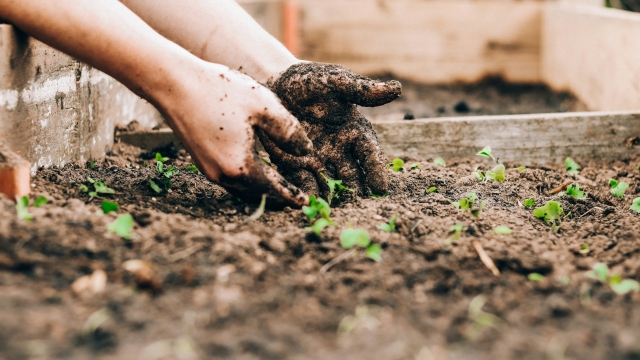As the world grapples with the escalating impacts of climate change, innovative farming products are emerging as vital tools in the quest for sustainability. These products not only enhance agricultural productivity but also contribute to reducing greenhouse gas emissions and promoting carbon sequestration. Farmers and researchers are increasingly focusing on solutions that benefit the environment while ensuring food security for a growing population.
From regenerative agriculture techniques to sustainable fertilizers, the farming products being developed today are designed to work in harmony with nature. By adopting these practices, farmers can play a crucial role in fighting climate change, enriching soil health, and bolstering biodiversity. This article explores the array of farming products that hold the potential to mitigate climate change while supporting agricultural resilience and productivity.
Regenerative Agriculture Practices
Regenerative agriculture practices focus on restoring and enhancing the health of the soil, which plays a crucial role in climate change mitigation. By implementing methods such as crop rotation, cover cropping, and reduced tillage, farmers can improve soil structure and fertility. These practices not only support sustainable food production but also increase the soil’s ability to capture carbon dioxide from the atmosphere, effectively reducing greenhouse gas levels.
Another important aspect of regenerative agriculture is the integration of livestock with crop production. Managed grazing systems allow animals to naturally fertilize the land while promoting biodiversity. This symbiotic relationship can lead to stronger ecosystems that are better equipped to withstand climate-related challenges. By promoting holistic land management, farmers can restore degraded landscapes, increasing their resilience and carbon sequestration potential.
Additionally, agroforestry is a powerful regenerative practice that combines agriculture and forestry. Planting trees alongside crops or pastures provides numerous benefits, such as enhanced carbon storage, improved water retention, and habitat for wildlife. These diversified systems not only produce food and other agricultural products but also create healthier ecosystems that can mitigate the impacts of climate change while promoting sustainable farming practices.
Cover Crops and Soil Health
Cover crops play a vital role in enhancing soil health and combating climate change. By planting cover crops during off-seasons, farmers can effectively reduce soil erosion, increase organic matter, and improve soil structure. These crops not only prevent nutrient leaching but also facilitate nutrient cycling, ensuring that essential elements remain in the soil for subsequent crops. This practice ultimately boosts the resilience of agricultural systems against climate challenges.
Moreover, cover crops contribute to carbon sequestration by capturing atmospheric carbon dioxide and storing it in the soil. When cover crops decompose, they release organic matter, which enriches the soil and fosters a diverse microbial community. This microbiome is crucial for healthy soil and aids in the breakdown of organic materials, promoting nutrient availability for future crops. Such benefits enhance productivity while simultaneously mitigating greenhouse gas emissions.
In addition to their environmental benefits, cover crops can also lead to economic advantages for farmers. Healthy soils require fewer chemical inputs, reducing costs associated with fertilizers and pesticides. Furthermore, by improving soil fertility and structure, cover crops can result in higher yields over time. This combination of ecological and economic benefits makes cover crops an essential farming product for sustainable agriculture and climate change mitigation. As farmers seek to adopt these innovative solutions for sustainability, many companies are encouraging them to Sign Up for newsletters that provide updates on the latest environmentally-friendly farming products.
Agroforestry and Carbon Sequestration
Agroforestry is a land management practice that integrates trees and shrubs into agricultural landscapes. This innovative approach not only enhances biodiversity but also plays a significant role in carbon sequestration. By planting trees alongside crops, farmers can capture more carbon dioxide from the atmosphere, effectively mitigating climate change. The trees absorb carbon during photosynthesis and store it as biomass, contributing to healthier soils and improved air quality.
In addition to carbon capture, agroforestry systems improve soil health and water retention, which are vital for sustainable farming. The roots of trees help to stabilize soil, reducing erosion and promoting nutrient cycling. This leads to increased crop yields and resilience against climate-related challenges. Furthermore, the diverse plant interactions within these systems can enhance pest control and reduce the need for chemical fertilizers, creating a more sustainable farming model that benefits both farmers and the environment.
Moreover, agroforestry provides farmers with additional income sources through the sale of timber, fruits, and other tree-based products. This diversification not only strengthens the economic viability of farming operations but also encourages more farmers to adopt practices that contribute to climate resilience. By integrating agroforestry into mainstream agriculture, we can harness the power of farming products to create a more sustainable future that actively combats climate change.
Sustainable Crop Varieties
Sustainable crop varieties play a crucial role in mitigating climate change by enhancing resilience and reducing greenhouse gas emissions. These crops are developed to thrive in diverse and challenging environmental conditions, making them more adaptable to climate shifts. For instance, drought-resistant crops help farmers maintain yields during periods of low rainfall, thereby reducing the need for supplemental irrigation and conserving water resources, which is vital in regions facing water scarcity.
In addition to water efficiency, sustainable crop varieties can improve soil health through practices like crop rotation and cover cropping. Varieties that are deep-rooted can enhance soil structure and nutrient cycling, promoting healthier ecosystems. By improving soil organic matter, these crops can also sequester carbon dioxide from the atmosphere, contributing to carbon reduction efforts. This is essential for farmers looking to implement practices that align with climate-smart agriculture.
Moreover, sustainable crop varieties can lead to a decrease in the reliance on chemical fertilizers and pesticides, which are major contributors to soil and water pollution. By promoting integrated pest management and utilizing natural pest-resistant traits, these crops minimize environmental impacts while ensuring food security. By adopting sustainable farming products, farmers can not only improve their resilience to climate change but also play a significant role in preserving the health of our planet for future generations.

